di Marco Maculotti
cover: Johann Heinrich Füssli, Nightmare
Sleep paralysis, also called hypnagogic hallucination, is a sleep disorder in which, between sleep and wakefulness (therefore in the moment before falling asleep or in the instant before waking up) one suddenly finds himself unable to move. Most of the time, according to what those who suffer from this disorder say, the paralysis begins with a tingling sensation that goes through the body, reaching the head, inside which the subject feels a kind of hum "like a swarm of bees ”or a sound similar to that of a washing machine or a“ thumping and screeching of metal objects ”. Often the victim of this experience tries to scream for help, managing at best to whisper faintly, also experiencing the unpleasant sensation of hearing his own voice suffocated by something abnormal.
Often, if the victim is in bed with someone, the latter cannot notice anything, to the point that often even the most disturbing phenomena (terrifying sounds and noises, incomprehensible voices, sometimes even strange unnatural lights coming from outside) succeed to arouse the attention of those who do not undergo the episode in first person. It can also happen that the succubus (which, if once the name for the mysterious entity causing the phenomenon, is now the term by which medical science refers to the 'victim') hears familiar voices - or, sometimes, even 'demonic' - calling him, or arguing with each other behind the subject's back or, worse still, whispering close to his neck, often from behind, in a disturbing voice.
Science believes that this abnormal state is due to the persistence of the state of atony that the muscles present during sleep and is caused by a discrepancy between the mind and the body: with the consequence that, although the brain is active and conscious and the subject can often see and perceive clearly what surrounds him, despite this the body remains in a state of absolute rest, to the point that any movement is precluded for the duration of the experience. Of course, science denies the reality of the experiences experienced during this mysterious experience, reducing them to mere hallucinations caused by equally mysterious alterations in the subjects' brain balance, which would occur at the exact moment of the transition between wakefulness and sleep — and vice versa.
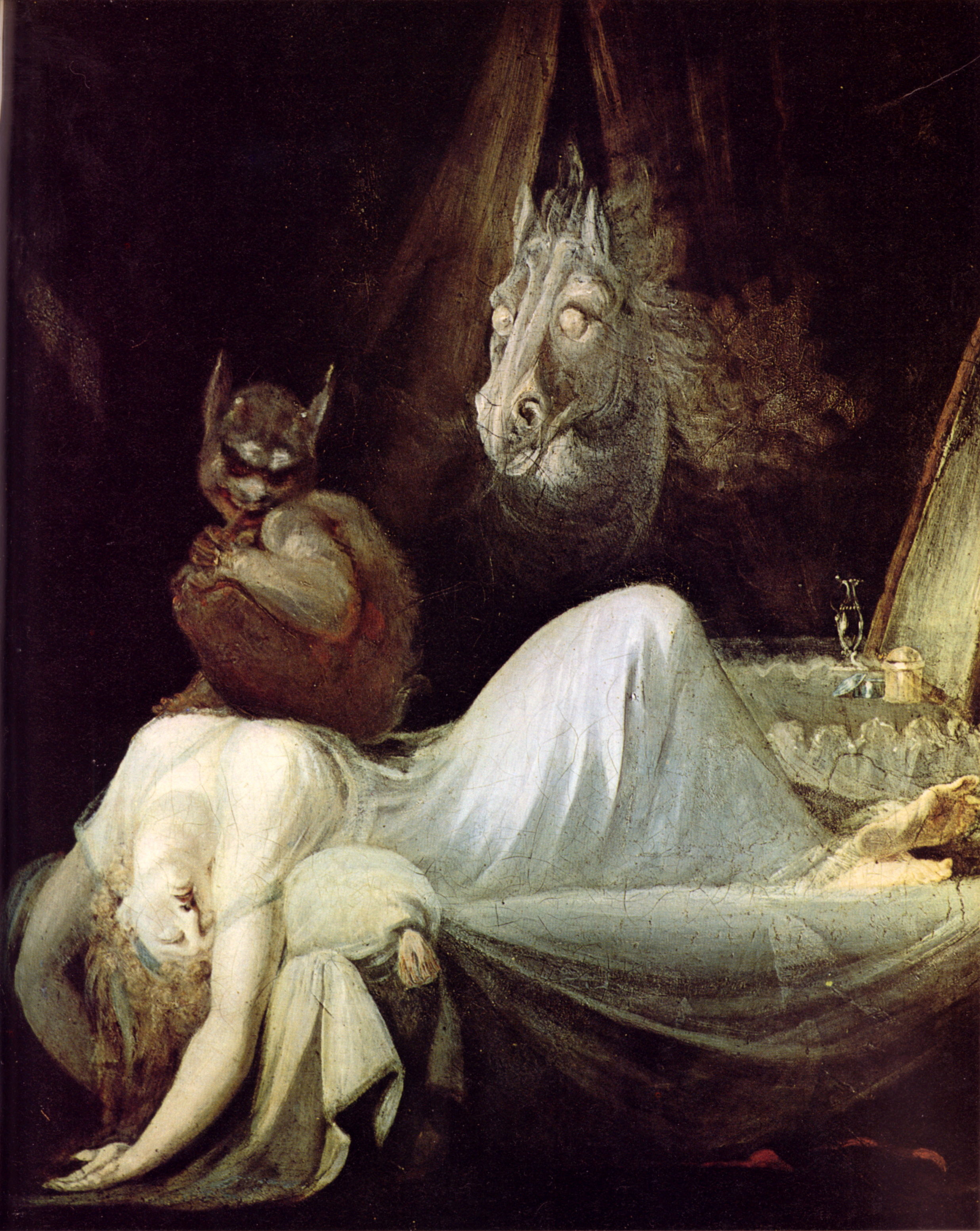
Many are of the opinion, however, that the analysis of the phenomenon is not possible exclusively by means of instruments strictly considered 'scientific'. Some point out that the phenomenon is neither recent nor solely typical of our era: since the dawn of time, in fact, individuals of the most varied geographical origins and historical periods have experienced the experience that today takes the name of "sleep paralysis" and they tried to decipher it with the means they had at their disposal, trying to give it a meaning consistent with their own vision of the world. For our part, we note how indeed the comparative analysis-syncretic of the totality of folkloric traditions existing on our planet suggests a pattern well defined that cannot be fully justified by reducing the experience to a mere unreal hallucination, devoid of any actual foundation.
The myths and the chronicles of folklore have transmitted to us with extreme clarity the way in which the ancients framed this phenomenon: surprisingly, all the chronicles and legends of antiquity agree in affirming that responsible for these disturbing experiences is a certain type of astral entities - sometimes labeled by modern minds as' spirits', other times as' demons', often also as'fairiesand the like — who carry out their attacks only during the night, often pressing on the sleeping victim's body and sometimes engaging in sexual intercourse with the subject. These entities, in various cultures, have been called in numerous ways, the best known of which to us Westerners are those of Latin derivation: 'succubi', 'nightmares' and 'larvae'.
FOLKLORIC BELIEFS
EUROPA
NORTHERN EUROPE. In Icelandic popular culture, people with sleep paralysis were generally believed to be possessed by a maraInn elf or succubus (since it is generally female) who was believed to be capable of causing nightmares (the origin of the Anglo-Saxon term 'nnightmare'derives from the union of the term' night 'with the name of this mysterious entity). The same name for the same phenomenon is found in Old Norse, Faroese, and Swedish. Also, the root Mar-, used for indicating the same beliefs, is found in a myriad of other countries of the European area, continental as well as insular. In the language proto-Germanic his name was brown, in Old English mære, in German mahr, in Dutch mare, in Danish sea, in Old Irish morrigain (from which Morrigan, the queen of the fairies, later became Morgana in medieval folklore sagas). In Celtic-Gaelic traditions, the phenomenon was attributed to the influence of named female creatures Leannain Sith, that is "familiar spirits"; among others, the Scottish Presbyterian Reverend Robert Kirk in The Secret Commonwealth (1692), in these terms (The secret kingdom, p.60):
Because in our mountains, as there are many beautiful ladies of this aerial race who often find themselves with lewd young men such as succubus or merry lovers or sluts (which are what are called Leannain Sith) so it also happens that many of our highlanders, as if were strangled by the nightmare or oppressed by a frightening dream or rather dominated by one of our air neighbors, they get up furiously at night and grabbing the nearest weapons they begin to push them and point them at all the people who are in their own room [...]
Regarding the precautions to be taken to repel these beings, Kirk notes that "iron prevents all operations of those who wander the labyrinths of these secret domains" (The secret kingdom, p.38) and reveals that "even today the Northern Scots put bread, the Bible or a piece of iron in the bed of women when they have the pains of childbirth to save them from being kidnapped" (pp.21-22). Also interesting is Kirk's description of the weapons used by these beings (p.28):
Their weapons are mostly solid earth bodies, nothing of iron but many of a stone similar to soft yellow flint, made like a bearded arrowhead, but thrown like a dart with great force. These weapons, crafted and crafted with tools that seem superhuman, have something of the nature of lightning, which wounds vital parts subtly and fatally without cutting the skin.
At this point in our analysis, Kirk's report may not attract the reader's attention very much; however, the importance of what the reverend reported about his weapons fairies it will appear enlightening to us later when we analyze the similarities between experiences of sleep paralysis and shamanic initiation journeys.

CENTRAL EUROPE. As regards the Balkan and Central European area, we find the term blackberry in the Croatian, Serbian, Slovenian and Slovak languages; in Bulgarian and Polish we find the denomination mara, already own-as we have seen—Of the North European area; in Romanian we find moroi, in Czech mura. All these extremely similar denominations of the phenomenon find their own ancestral origin in the Proto-Indo-European root blackberry, which means nightmare, deriving in turn from the root sea- whose meaning is'rub away 'or' badly '. In Hungarian folklore, sleep paralysis is referred to as lidércnyomas (literally, "sprite who presses") and was attributed to a series of supernatural entities such as the nightmare ("Goblin"), la witch ("Witch"), the tunder ("Fairy") or theördögszerető ("Lover demon"). In the Moldovan tradition, this evil entity is referred to as Zburatorul.

MEDITERRANEAN AREA. In Greece and around the island of Cyprus, sleep paralysis was thought to occur when a demon-like incorporeal creature named blackberry, Vrachnas o Varypnas (in Greek: Μόρα, Βραχνάς, Βαρυπνάς) tried to steal the victim's soul, sitting on the victim's chest causing asphyxiation. On the island of Malta, popular culture attributed the incident to an attack by Haddiela, an entity that tormented the individual in a similar way to a poltergeist; to free himself from his grip it was recommended to place a piece of silverware or a knife under the pillow before sleeping. We therefore rediscover the curious property of metal, especially iron — as the Scotsman Kirk pointed out — in keeping these entities away during the night.
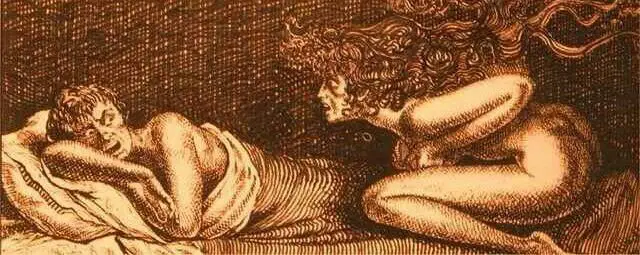
ITALY. In the mythology of the ancient Romans, theincubus it was a male-like demon who lay on the chests of sleeping women, instilling chaotic dreams in them and taking advantage of their bodies with sexual acts. In other legends, which then came up to Middle Ages, the succubus (from Latin succubus "Lover") is a female demon who seduced men, especially monks, to have sexual intercourse. According to legend, the succubus absorbed man's energy to feed themselves, sometimes leading to death the unfortunate. According to other versions of the myth, they drove man to sin with their temptations. This superstition was also a medieval explanation for the uncontrolled nocturnal ejaculations (pollutions) that occurred in pre-adolescent youth.

GReci and Romans had a vast vampire mythology, including female demonic entities, deriving from the ancient European shamanic tradition. There lamia, queen of the succubi, was a sort of witch, who at times appeared with the features of a beautiful girl, at times instead as an old woman, at other times with animal features, preferably a snake with a woman's head. In ancient Rome the strix, direct ancestor of the striae Italian and of the ghost Romanian, which often manifested itself in the form of nocturnal birds. Another lethal girl was theempusa, who appeared as a splendid girl, although in reality she hid monstrous and repugnant features, including a bronze foot and a donkey dung. Le murmuredinstead, they were likewise vampiric entities, in the service of Hecate, goddess of the night, of black magic and protector of witches.
ASIA
MIDDLE EAST. In Arab legends, the phenomenon of sleep paralysis is often referred to as kaboos (Arabic: كابوس), literally "to press" or ja-thoom (in Arabic: جاثة) literally "something that sits heavily on something". Although later the term kaboos will also be used to refer to any kind of bad dreams, originally in the folklore of Arab countries, it was believed that Kaboos it was a demonic entity that used to sit heavily on people's chests during sleep. The same belief is found in Turkey, where sleep paralysis is defined nightmare ("The dark foot") and is similarly attributed to a creature that attacks people in their sleep, pressing on the chest and stealing their breath. In Persian culture is found in the bakhtak (Persian: بختک), a phantom entity that likewise sits on the dreamer's chest, making breathing dangerously difficult. It is also believed that aSome homes and places are haunted by evil ghosts that could haunt people who live there, especially at night. In the Muslim area, 'holy persons' (i.e. imams, maulvises, Sufis, mullahs and fakirs) are often called upon to perform exorcisms on those believed to be possessed by such entities.
SOUTH ASIA. In Pakistan the phenomenon of sleep paralysis is considered to be due to an encounter with Shaitan (Urdu: شيطان), a jinn or evil demon who is able to take control of the victim's body. As in Iran, this entity is also known as bakhtak (urdu: بختک) or ifrit. It is also believed that such an experience is caused by the use of black magic by envious enemies or people. Ai bchildren and young girls are made to wear an amulet, ta'wiz (urdu: تعویز) to ward off the evil eye. In the Tamil folklore of the Sri Lanka, this particular phenomenon is referred to as amuku be o amuku pei, which means "the phantom that forces downward". In Nepal, especially in the Newari culture, khyaak, a ghost believed to reside in the dark, under the stairs of a house.

SOUTH-EAST ASIA. In Cambodian Lao and Thai cultures, sleep paralysis is called phǐǐ e khmout sukkhot e are described such as events in which the sleeping person dreams that one or more ghostly figures are nearby or are holding him down forcefully. The victim usually thinks she is awake, but is unable to move or make sounds. Even in culture Hmong, it is believed that sleep paralysis is caused by a nocturnal spirit pressing on the chest of the victim, and this entity is called dab tsog; this creature sometimes even tries to strangle its victims; some believe that it is responsible for the sudden and unexpected death overnight of over 100 immigrants from Southeast Asia in the late XNUMXs and early XNUMXs. In folklore Vietnamese, the same phenomenon is called dje, meaning "pressed by a ghost" or bong dje, ie "held down by a shadow". In the Philippines the phenomenon is defined bangungut and is traditionally attributed to nightmares. In New Guinea, people refer to this phenomenon as ninmyo suk: here, however, the belief is widespread that those responsible are sacred trees that use the human essence to sustain their life; in fact, it is said that these trees feed on human essence during the night so as not to disturb the daily life of man. In pen Malay island, sleep paralysis is known as kena tindih (o ketindihan in Indonesia), which means "to be pressed".
EAST ASIA. In Chinese culture, sleep paralysis is widely known as 鬼 压 身 / 鬼 压 身 (pinyin: guǐ ya shen) or 鬼 压 床 / 鬼 压 床 (pinyin: guǐ chuang ya), which literally translates as "phantom pressing on the body or" phantom pressing on the bed ". A more modern term is 梦魇 / 梦魇 (pinyin: meng yǎn). In Japan the phenomenon comes indicated as kanashibari (金 縛 り, literally «bound or fixed to the metal», from kane (metal) e shibaru (to tie, to fix). In Korean culture it is called gawi null (hangul: 가위 눌림) which literally means "to be pressed by a ghost" and is often associated with the belief that a spirit lies down on the sleeper, pressing his chest. No.In Mongolian culture, nightmares in general as well as sleep paralysis are called khar darakh o kara darahu, which means "to be pressed by black" (kara in fact it means "black, dark, shadow"). The "shamans of the dark side" are called kharin boo and they survive only in the far north of Mongolia; they, unlike the tsaghaan zugiin buu ("Shamans of the light side") are able to summon even malevolent spits, and therefore are sometimes held responsible for the attack of evil spirits during the night.

AFRICA
In African culture, sleep paralysis is commonly referred to as "the witch riding on her back". Among the Yoruba of southwestern Nigeria, possession by Ogun Oru (literally, "night war) is the folkloristic explanation for nocturnal disturbances; this demon is believed to be responsible for a serious nocturnal disturbance, traditionally attributed to demonic infiltrations in the body and psyche during dream activity. Ogun oru appears mainly with female features and sometimes engages in a feud against his victim's earthly wife, sometimes causing her death. It is believed that thisprovided that demonic possession is treatable by means of Christian prayers or elaborate traditional rituals designed to exorcise the demonic elements deafened during sleep. In Zimbabwe's Shona culture, the word madzikirira it is used to mean "something that presses down". In Ethiopia the term is used dukak to indicate an evil spirit that possesses people during the sleep phase; aSome believe that this experience is related to abstinence from khat, a magical herb that native tribes usually chew to make their dreams more serene. Among the Swahili of East Africa the phenomenon is known as jinamizi, and refers to a creature sitting on the victim's chest, making it difficult to breathe; most of the people who have gone through this agonizing experience also remember being strangled by this 'creature'.
AMERICA
During the Salem witch trials several people reported nocturnal attacks by alleged witches to the authorities; this, of course, may have been the result of sleep paralysis. In Newfoundland and Labrador, the creature considered responsible for this experience is known as the Old Hag; in folklore, the "old witch" can be summoned by sorcerers to attack a third party, like a curse. In her 1982 book, The terror that comes at night, David J. Hufford wrote that in the local culture the most adequate way to invoke the Witch is to recite the Our Father in reverse. In many parts of the southern United States, the phenomenon is also known in the same way, but in addition it is said that the experience is often premonitory of a tragedy or accident that will strike the victim or loved ones. In Mexico it is believed that this is caused by the spirit of a dead person: this ghost lies on the body of the sleeper, making him unable to move, and refers to the entity like "Suffered the Death"(Literally," corpse on you ").
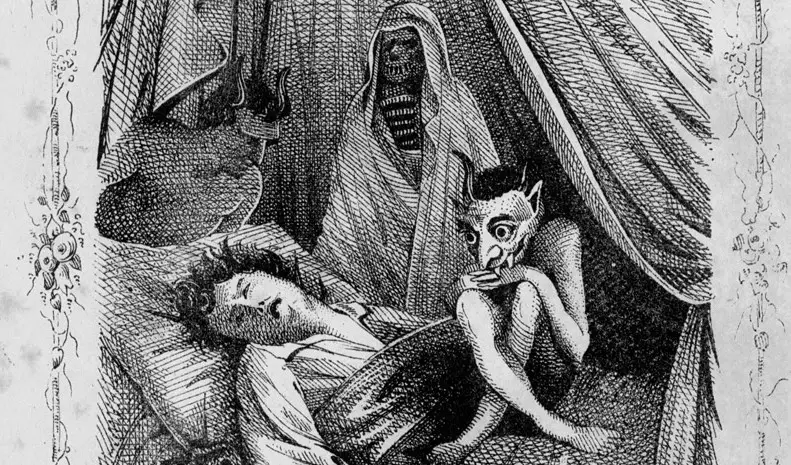
DREAM ENCOUNTERS IN THE SHAMANIC TRADITION
A parallelism with the phenomenon of sleep paralysis and the consequent encounter with supernatural creatures can also be easily found in the literature concerning the experience of shamanic initiation. Joan Halifax in her work shamanic voices (1979) reports numerous testimonies in this regard, such as that of a neophyte shaman who told the Norwegian anthropologist Jon Rasmussen that "as a young man he was besieged by dreams he did not understand: strange beings spoke to him and, upon awakening, he saw dreams so clearly that to be able to tell them in their entirety to friends "(J. Halifax, Shamanic voices, ed.it. Rizzoli, 1982, p. 16 et seq.).
Another account reported by Halifax, collected by Megan Biesele, concerns an old bushman! Kung, who described his encounter with supernatural entities in a trance state in these terms: “Yes. He is a spirit. […] Then there is another whose legs are soft. […] He has horns. […] And his ears stick out. […] His face is big! […] It is a terrible thing, my friend. An unclean thing. One thing to make you run away. People have to heal, against him, because he is so evil. People are afraid of him… ”(p.63).
A Paviotso Indian from Nevada explains access to shamanic vision in these terms: “There are two nights. The second night follows the night we all see. This second night is below darkness. […] Only shamans can see this second night. People can only see the darkness. They cannot see you in the night that is below it. " (p.107). Let's compare these statements with what has been said by various subjects suffering from sleep paralysis, who affirm that in those situations "the darkness teems with all forms of life, normally invisible to sight" and we will have something to think about. We now extend the comparison to some excerpts from the usual Kirk concerning the world of fairies (The secret kingdom):
There are strange ceremonies when one is invested with all the privileges of this mysterious second sight ... (p.34) [...] Then he will see a number of spirits who look like angry and strong men coming towards him from all parts of the horizon, dense like dust in the air. And they are not things that do not exist or ghosts, beings that come from frightened perception or from a confused or crazy feeling: but they are realities that manifest themselves to a balanced man in possession of all his senses so as to be able to have a valid testimony of the their existence. (p.35) [...] These men here we are talking about perceive things that given their smallness and tenuousness [...] are invisible to others even if they are close to them every day. Because they continually have with them a ray like that of the sun that only when it shines clearly does it make common eyes see the dust atoms in the air while without these rays they could not discern them. (p.37)
Returning to the purely shamanic accounts, it should be noted that experiences of this kind always occur in a trance state, that is to say on the threshold between wakefulness and sleep, just as happens to subjects who suffer from paralysis in sleep; the only difference is that, in the case of the shamanic experience, this altered state of consciousness is consciously sought by the subject, as well as often favored by fasting and ritual practices and often intensified by the intake of psychotropic substances, which can vary from amanita muscaria ( Siberia), psilocybin, ayahuasca (Amazonia) and so on. In other words, unlike clinical subjects who "undergo" such experiences, shamans voluntarily take themselves into that unknown limbo between the waking and the dream world, in order to experience the encounter with supernatural entities and thus gain spiritual powers.
They, therefore, have the ability to place themselves in a particular mental state which makes visible to them what is invisible to the common individual. Halfway between the shamanic experiences and those of sleep paralysis are the encounters with fairies, sometimes sought after, sometimes completely random: this, on the other hand, seems perfectly logical to us, as the time span concerning these phenomena is halfway between the archaic and the modern age, in which similar phenomena occur mostly in an unexpected way and without any knowledge or interpretative tool suited to allow their placement within a logical framework.
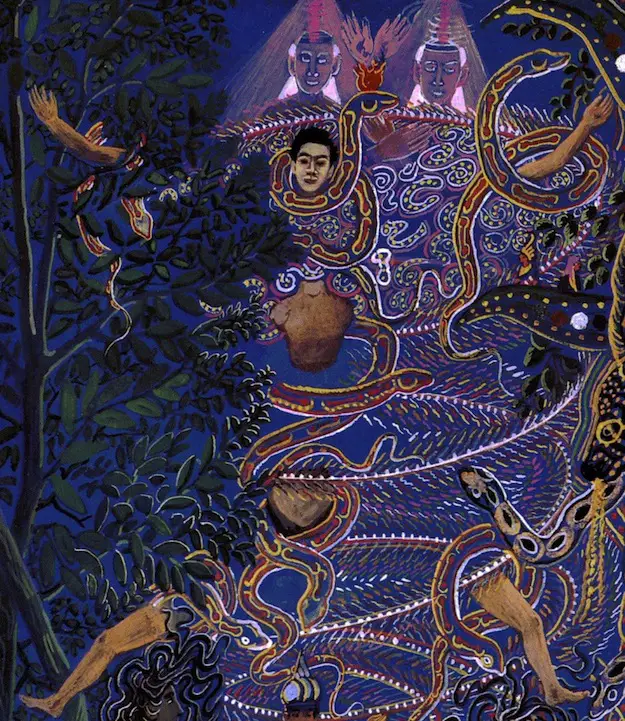
RITUAL INJURIES AND DISMISSIONS
Often, the encounter with the spirits evolves into a "ritual wound" which leads to a real "dismemberment" (in the astral plane, of course, since during the initiatory trance the body of the neophyte remains immobile and does not suffer anything of what the initiate experiences during the shamanic journey), a dismemberment that the shamans nevertheless experience as an indubitable reality, since upon awakening they find themselves endowed with previously unthinkable psychic skills. With this in mind, let's read what Scottish researcher Graham Hancock (Shamans, Mauri Spagnol, 2006, p. 282 et seq.) Who analyzing this phenomenon finds exceptional correspondences between numerous shamanic cultures:
In the Amazon jungle, when the shamans of the Jivaro tribe go into trance from the effect of ayahuasca, they interpret the same neurologically generated skin sensations as small sharp darts thrown at them by supernatural entities. The Tungus Siberian shamans, on the other hand, speak of initiation trance, induced by the ingestion of Amanita muscaria, in which they feel the body pierced by arrows, the flesh torn, the bones torn. […] Even the Jus hoansi [Southern Africa] believe in the existence of evil supernatural darts- "arrows of pain" - shot by spirits and visible only by trance shamans. […] Some subjects told anthropologist Richard Katz that when this happened they felt their stomachs "full of thorns", as if there were "arrows sticking out of all sides".
Hancock himself (p.286) also reports a statement by a Kyrgyz shaman from Kazakhstan in which he claims to have "five spirits in heaven, who cut me with forty knives and stabbed me with forty nails" and cites the belief of the iakuti of the Northern Siberia according to which "sometimes the initiate in a trance is taken by three black devils who tear his body to pieces, stick a spear in his head and throw pieces of his flesh in different directions".
Similar examples are found by the dozen in the monumental work of Mircea Eliade Shamanism and the techniques of ecstasy (1951) and in others that investigate shamanic initiations: usually this "ritual wounding" results in a real dismemberment, which is followed by the initiatory rebirth of the aspiring shaman, who awakens endowed with supernatural powers (conferred, it is thought , from the action of the spirits). Hancock also adopts the same line of thought, citing the sacred beliefs of the most varied cultures of our planet, including that of the Australian aborigines, according to whom "the spiritual dismemberment and recomposition of their 'medicine men' involve strange surgical operations in the during which supernatural beings insert small fragments of rock crystal (called 'antongara') into the initiate's body "(p.286).
Comparing these testimonies with what was reported by the Reverend Kirk regarding the characteristic weapon of the fairies scottish, «made as a tip of arrow barbata, but thrown like a dart with great force", Having"something of the nature of lightning, that injures vital parts subtly and fatally without cutting the skin(And in fact the shamans every time, after dismemberment, wake up totally devoid of any wound) it is natural to hypothesize that there are indisputably solid points in common between the different traditions. Let us take up once again Kirk's work, and we also quote what he says about those who have experienced the encounter with fairies (p.29): «Those who are not exorcised or purified (they call them fey) are said to be goinnt, that means passed away or wounded with weapons by this people, which often causes them to act very differently from their previous demeanor, causing a sudden alteration, although the cause of this is for the moment invisible ». We must note here that numerous subjects who have experienced sleep paralysis also claim to have suffered injuries or frightening torture by 'demons' or 'black shadows', and obviously upon awakening they realized that none of this had happened to their body— at least, on the purely plane physical.
LOVE WITH SPIRITS
There's more. Often, the shamanic testimonies from all over the world report the possibility that the shaman has a real love / sexual relationship with the spirit with which he comes into contact during the trance. Halifax quotes the Russian ethnologist Shternberg, who says that the Tungus shamans of Siberia were "pushed into shamanic service by a special spirit who offered them love and with whom they lived together. in sleep"(P.123).
Graham Hancock reports that “a few years before his initiation, a neophyte shaman from the Siberian Buryat tribe experiences a celestial journey in which he has intercourse with numerous spirit-women, one of whom becomes his wife in heaven"(Shamans, p.354); moreover Hancock himself writes that, among the saoras of Orissa (India), "the future shamans receive the call and the spiritual consecration during the visits from the underworld of a suitor who asks for their hand" (p.355) and that " the saoras say that when this suitor from the spirit-world entered the bedrooms of the girls, the whole family fell prey to a spell and lay in a deep sleep»(P.356): exactly the same situation experienced by those who, today, live an experience of paralysis in sleep.
We will not go further on examples of this type, since they are easily found in almost any shamanic tradition of our globe. For our part, we believe that there is a clear parallelism between these traditions, the encounter with the succubus of ancient memory and that with the mysterious entities during episodes of sleep paralysis.
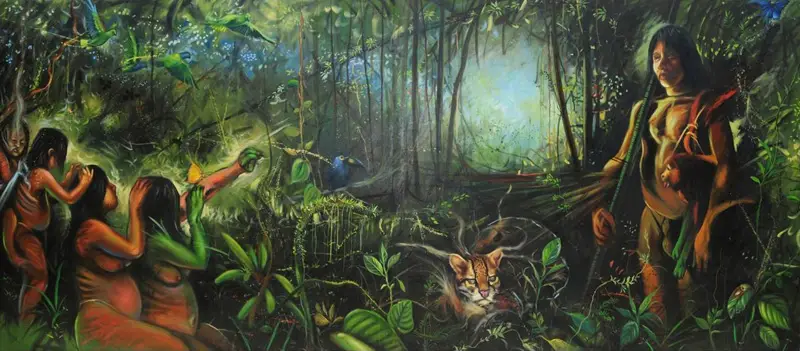
SAME PHENOMENON, DIFFERENT REACTIONS?
We would now like to underline how, if in the societies of the ancient world and among the peoples who follow the shamanic path, such an encounter with supernatural beings was considered as the most precious gift that an individual could receive, we note that already in the end of Scotland '600 such subjects were not looked upon favorably, to the point of recommending their "exorcism" and "purification" following the encounter with the mysterious entities: this, on the other hand, is perfectly understandable in the light of the phenomenon of "Witch hunt", which by now had been going on relentlessly for centuries. Clairvoyance and other supernatural faculties (characteristics that allow Kirk to define an individual 'fey" or "goinnt') are reduced by the Christian mentality to mere' demonic 'powers, and consequently not only those who possess them are no longer considered as a spiritual leader (as happened in shamanic societies) but with an absolute inversion of perspective they are pointed out as a 'companion of the demons', and therefore avoided if not even removed from the social consortium.
Finally, in our technological and materialistic era, there is no longer even room for any kind of hypothesis or theory that goes beyond what can be scientifically demonstrated with repeatable experiments in the laboratory: an obviously not very functional approach to decipher such a singular and absolutely unique experience. not recreatable on command like sleep paralysis. The bitter consequence of this irresponsible attitude of academic science is there for all to see: those who are faced with these bizarre episodes nowadays are at best considered 'strange' individuals, if not visionaries or even worse. psychotics completely devoid of any contact with the so-called 'reality', when instead, to evolve significantly from the cognitive point of view, it would seem desirable that it was the human mind to adapt to the events of the phenomenological world, however complex to decipher and understand they are, and not vice versa.
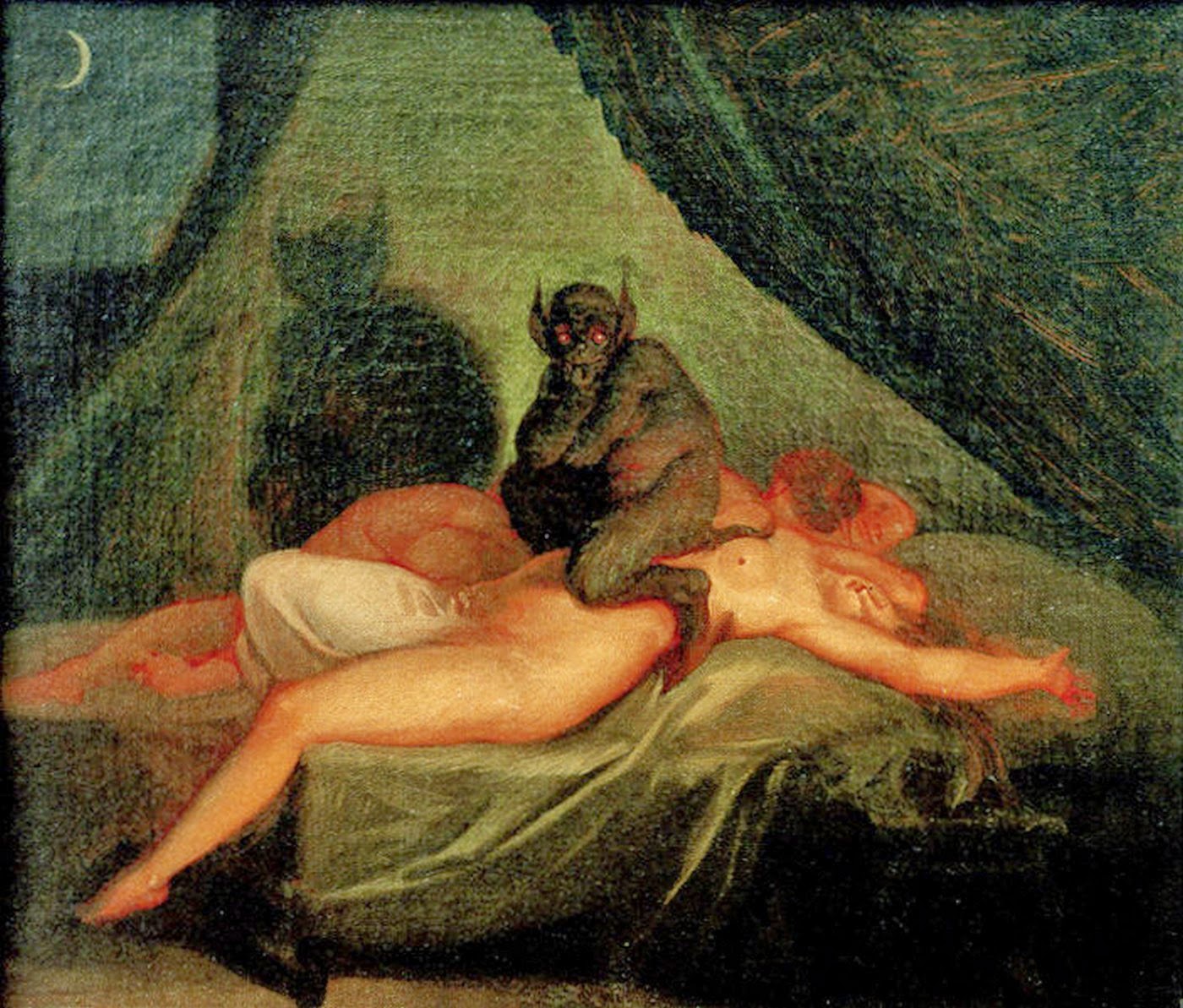
THE «THIN NIGHTS» OF HP LOVECRAFT
Other parallels can be found in recent history. One of the most sensational comes to us from the pen of Howard Phillips Lovecraft, unanimously considered one of the greatest writers of literature of the twentieth century, who told his correspondents about the encounters he experienced as a child, from the age of six to eleven , every night, with the so-called "Skinny Nights" (Night Gaunts). Here is how the writer describes these chilling experiences in a letter to Rheinhart Kleiner dated November 16, 1916 (HP Lovecraft. The horror of reality. Edited by G. De Turris and S. Fusco, Mediterranean ed., 2007, p.39 and following):
In January 1896, my grandmother's death threw the whole family into an atmosphere of mourning from which they never fully recovered. […] It was then that my natural vivacity died away. I began to have the most hateful nightmares, peopled with things I had christened "nocturnal skinny," a composite term of my own invention. I often drew them after waking up (perhaps the idea of those figures had been inspired by a de luxe edition of Paradise Lost with illustrations by Gustave Doré, which I had discovered one day in the oriental sitting room). In dreams, they dragged me flying through space at breakneck speed, while stabbing me and tormenting me with their detestable tridents. Fifteen whole years have now gone by-indeed more- since I last saw a "thin nocturnal", but still, when I am half asleep and I let myself drift in a sea of childish thoughts, I feel a shiver of fear [...] and instinctively I struggle desperately to stay awake. This was my only prayer in 1896, every night: stay awake and beware of the meager nights!
Reading Lovecraft's testimony, several reasons immediately catch the eye that we have already encountered elsewhere. First, the strong emotional stress situation in which the subject was at the time of the onset of the first episodes: a classic in the medical literature concerning cases of sleep paralysis. Again, the fact that experiences always took place when he was "half asleep», That is to say in an intermediate state between wakefulness and sleep: this characteristic also allows us to correctly associate the encounter with the« Skinny Nights »with the clinical experiences of sleep paralysis.
In addition, in addition to the vision and perception of these mysterious creatures, we note that it is said that "stabbed"And"they tormented with their detestable tridents»: In these hints, in addition to the aspect of the entities that Christians would define as 'demonic', it seems appropriate to us to recognize strong points of contact with the shamanic experiences reported above, in which the aspiring initiate is not infrequently wounded, prodded with sharp darts, "pain arrows", Spears,"rock crystals" and so on. We consider it appropriate, therefore, to bring back the youthful experiences of the brilliant writer from Providence in the context of sleep paralysis and, even more clearly, of the shamanic encounter with spirits of other dimensions which often, as we know, results in a (apparently incomprehensible to the eyes of a child of the bourgeois society of New England at the end of the 800th century) actual injury through the use of sharp and cutting weapons.
It is curious, however, to note that, despite the fact that little Howard did not have adequate interpretative tools in order to frame the episodes that tormented him every night from six to eleven, it seems that he nevertheless went through a full-blown 'path of initiation'. In fact, the encounter with the mysterious dark spirits was followed by what the shamans call 'ritual wounding and dismemberment'. This, although Lovecraft probably never fully understood it, may have had in our opinion a real influence on his literary production in the years to come. It is no coincidence, we believe, that the Providence writer practically gave birth to a real 'dark mythology' of cosmic spaces (in which even the "Night Skinny" have their role) that never before he had been even remotely able to imagine. In our opinion, we are faced with a very rare case of modern shamanic initiation, not sought after as in the case of the ancient shamans, but simply occurred to a subject (particularly predisposed, this is evident) who was not in possession of any notion of shamanism.

THE PHENOMENON OF ABDUCTION
The most modern parallelism, as well as the last one regarding this study, to which we believe it is appropriate to give credit regards the phenomenon (apparently very recent as well as scientifically inexplicable, and therefore unexplained) of the abduction, namely the so-called "alien abductions". Over the past sixty years, numerous people around the world have expressed the belief that they have been taken by alien beings and taken aboard spacecraft or in places that are difficult to access, such as underground or underwater bases, or even in places that appear to be located in the sky or other dimensions. In these places, the "abductees" claim to have undergone medical examinations and operations, torture with sharp objects, and to have been forced, often reluctantly, to entertain sexual relations with these mysterious entities.
Already at the end of the Sixties, the French researcher Jacques Vallée, examining phenomena that go beyond the ordinary sensible experience, noticed a similarity between certain phenomena present in folklore (such as encounters with the people of fairies), modern alleged close encounters with extraterrestrials and other alleged paranormal phenomena (Passport to Magonia: From Folklore to Flying Saucers, 1969). He glimpsed in the (apparently) recent phenomenon of abduction a control system of terrestrial evolution that is active in human history and operates on the collective unconscious of our species. According to his hypothesis, these entities do not come from space, but rather from a dimension parallel to ours (paraphysical hypothesis); they would therefore be entities interdimensional, and the encounter with them would only take place in certain situations of altered consciousness.
We must immediately note that the so-called "alien abductions", like the episodes of sleep paralysis, occur precisely during the night, when the subject is in bed about to fall asleep. Other individuals report cases in which the experience of the kidnapping occurs while they are behind the wheel of their car, during a long and monotonous journey, in the vast majority of times at night: an ideal situation, in short, for the mind to enter that particular. state of trance that the ancient shamans knew well, and considered the gateway to other dimensions of being.
More recently, even the already mentioned several times Graham Hancock has thought to discover parallels between the meeting of the ancient Europeans with the "Little People" (and the consequent entry into the "fairy kingdom"), the spiritual experiences of the shamans in other dimensions, as well as with the phenomenon of abductions. For our part, it seems sensible to extend the field of investigation to include episodes of sleep paralysis, since, as we will try to demonstrate, the parallels are really too many to pretend that they do not exist. Therefore, we report some testimonies regarding the so-called "alien abductions" and compare them with the experiences of a shamanic type (Shamans, p.316):
Jerry reported that something as sharp as a needle was being directed sideways into her neck [...] A small being stuck a large needle about a foot long with a kind of handle in Joe's neck, just below the ear, "against the skull », Causing him a strong pain ... [...] A metal instrument about thirty centimeters long was inserted deeply into Catherine's brain through one of her nostrils:« something broke to be able to enter my brain »...
Let's now compare these disturbing testimonies with some shamanic accounts reported by the author:
Three black and evil creatures forcefully push a spear into his head (Yakut, Siberia) […] A spirit throws an invisible spear at him, which pierces him on the neck from behind, passes through the tongue, thus making a large hole , and then comes out of the mouth… (Arunta, Australia) […] A snake is placed around their heads and their noses are pierced by a magical object… (Warramunga, Australia).
If the parallelism was not already clear enough, let us continue to cite the testimonies reported by Hancock; from the victims of abduction (p.317) ...
Two beings operated on Eva's spine: "I felt as if they were entering my body with some pointed instrument, as if they were introducing it between flesh and skin ..." [...] A long needle was inserted into Betty Hill's navel , causing her excruciating pain.
... and now again from the shamanic accounts:
"I saw the figure of a man ... whose head was surrounded by a luminous glow ... He said," Wait fearlessly until I have said and done all that is my intention. " Later I felt various instruments, at first similar to sharp knives, then like needles, penetrate my flesh ... "(Ojibwa, Canada) [...]" It is thought that the aspirant within the Kuksu society has his navel pierced by a spear or from an arrow by the hand of the Kuksu himself… »(Patwin River, North America).
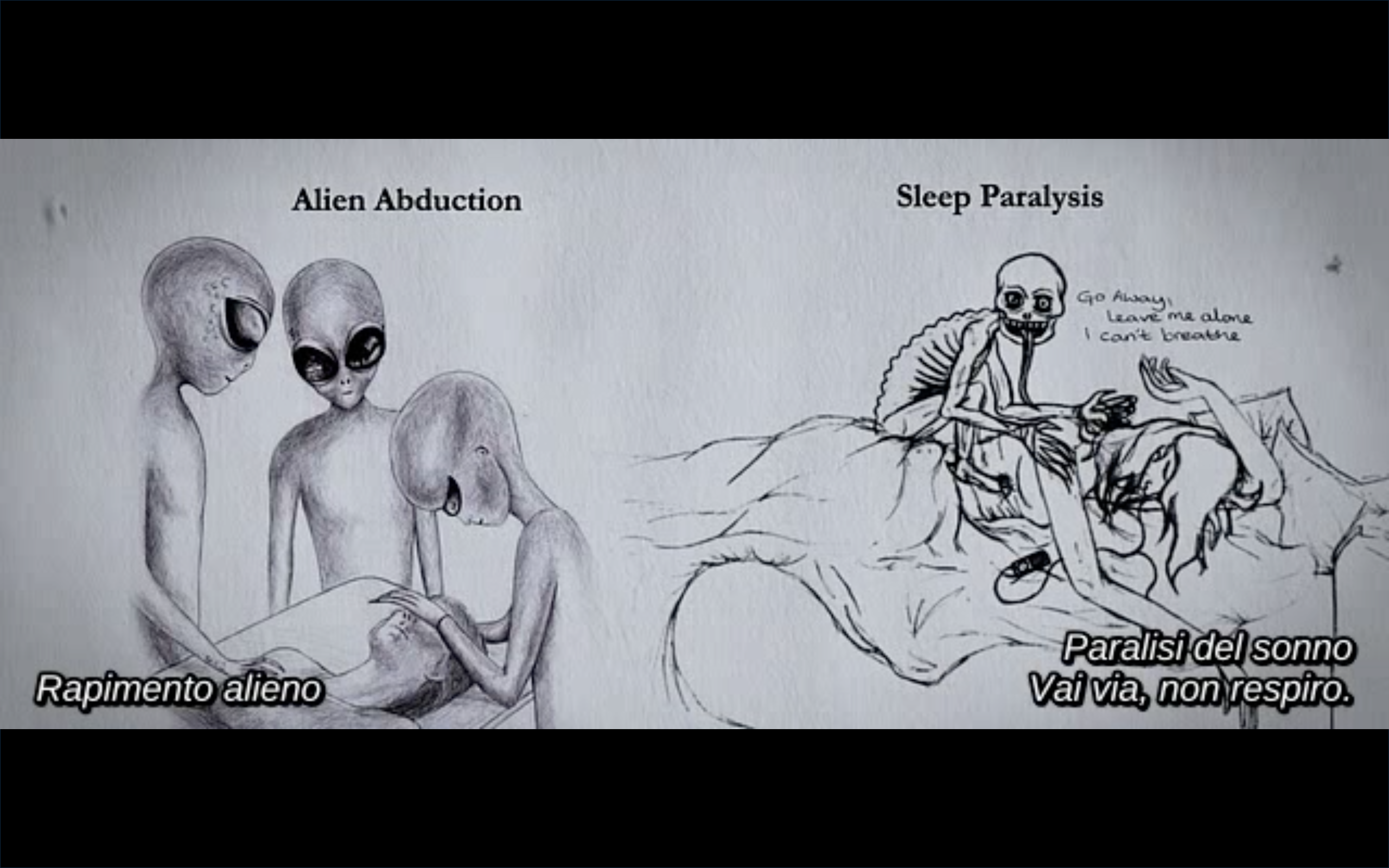
If all of this is in itself rather shocking from how evident the parallelism is, it should also be added that even the victims of abduction often report testimonies of sexual unions with alien entities: mention of this can easily be found in studies by American researchers Budd Hopkins and John Edward Mack, as well as in Whitley Strieber's account (Communion, 1987; from which it was drawn two years later the film of the same name, directed by Philippe Mora) who experienced a particularly intense relationship with one of the entities whose nocturnal visits he used to receive. Although the creature appeared asexual, Strieber was firmly convinced it was a 'she', also and above all for the fact that he had entertained not only sexual relations with it, but also more subtly sentimental: hence the title of the work, chosen by the 'author to underline how the relationship between the two was not only invasive and traumatic, but with the passage of time it had turned into a real spiritual' communion '. Exactly what one would expect when reading the shamanic accounts concerning the 'guiding spirits' and the 'wives in heaven', or those reported by Kirk concerning his encounters with the mysterious people of the 'Secret Kingdom'.
It only remains to note how, in clinical cases of sleep paralysis, it is difficult to implement such a relationship. The subjects live the same experiences, they feel paralyzed and helpless, the outside world is populated by dark and mysterious inhabitants, who often frighten them and sometimes cruelly wound them. Sometimes, in more complex cases, people feel sexually violated by these entities. However, in the vast majority of cases, individuals suffering from sleep paralysis experience the experience dramatically and have no doubts in defining the entities that visit them as evil, if not even 'demonic' or 'satanic'. this particular state of consciousness. But is this really the case? Are these entities really cruel? Or rather are we human beings who, now unaware of the mythical and folkloric traditions that our ancestors have handed down to us over the millennia, are no longer in possession of the necessary interpretative tools that would make it possible for us to decipher and understand these obscure phenomena?
Posterity will judge.
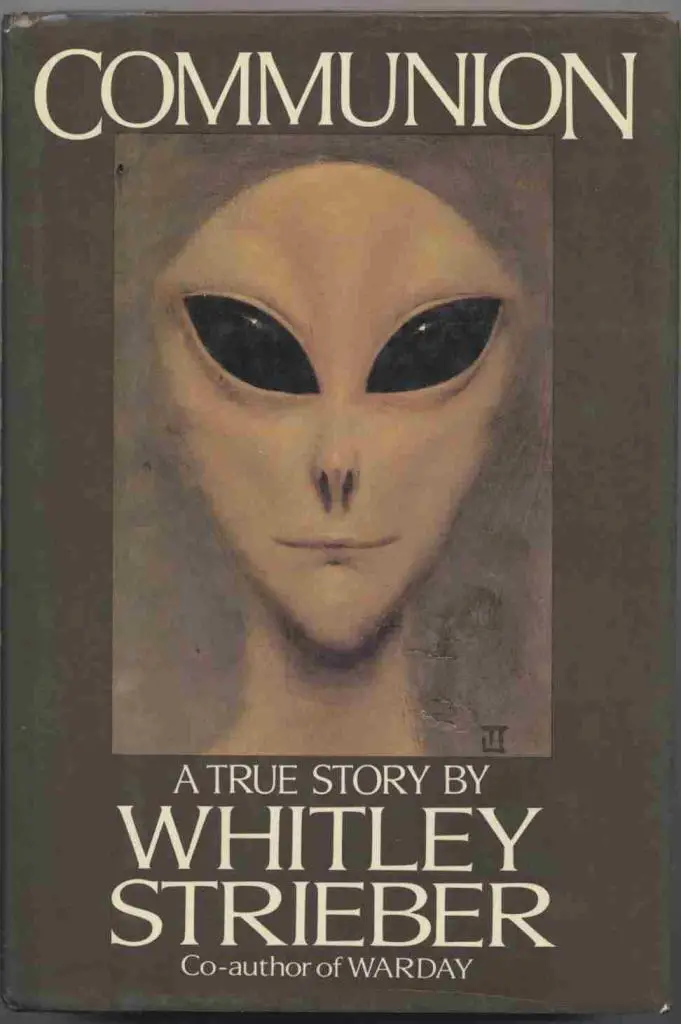
BIBLIOGRAPHY
- Mircea Eliade, Shamanism and the techniques of ecstasy (Mediterranean, 1974)
- Joan Halifax, Shamanic voices (Rizzoli, 1982).
- Graham Hancock, Shamans (Mauri Spagnol, 2006).
- HP Lovecraft. The horror of reality, edited by G. De Turris and S. Fusco (Mediterranee, 2007).
- Robert Kirk, The secret kingdom (Adelphi, 1980).
- Whitley Strieber, Communion (Rizzoli, 1988).
- Jacques Vallee, Passport to Magonia: From Folklore to Flying Saucers (1969)
PS For those interested in the topic of "sleep paralysis" and would like to hear the testimonies of the interested parties firsthand, the vision of the recent (2014) documentary The Nightmare is strongly recommended.

A wonderful article. Thank you!
Thanks to you for your appreciation, Eleonora 🙂
Guy de Maupassant's tale le Horla!
Hello and thank you very much for the full explanation .. I suffer from these episodes often and I found it really interesting to read the various hypotheses and beliefs around the world .. even hearing it before it happens ... the buzz of bees in my head ... you are the first to mention it ... and it happens to me regularly, as I am also firmly convinced that it is not just a clinical issue but there is more ... although most of the time they are really terrifying I really think they are a door on another level of consciousness and on what is normally invisible to our human eyes.
It happened to me twice. Chilling. A demonic entity was pressing me, taking my breath away. I tried to move and scream but I was paralyzed. The first time the entity shouted at me with unprecedented violence to kill my girlfriend who was sleeping in the next room at that moment. Then she discovered that at that very moment she was having severe and inexplicable pains in the bones that tormented her. Three years later she happened to me again. She was even more fearful than the first time. The demon pressed me and suffocated me, spoke to me in a satanic voice. Pure terror. I managed to wake up, jumped out of bed ... I was convinced that if I fell asleep again the attack would resume. I looked in a drawer and found, although I was not much of a believer at the time, an image of St. Michael with the famous exorcism that I recited several times before going back to sleep. I fell asleep again and slept peacefully. It was the dawn of January 2nd. That new year that was just starting would then be the worst time of my life.
Terrible. Have you seen the documentary The Nightmare? There are people who talk about experiences very similar to yours. Thanks for sharing
MM
In Campania, on the other hand, there is the Janara who, according to the stories, enters the homes of others also to steal their horses.
The next day the foals returned with a braided mane, an unmistakable trace of the passage of the witch.
The visit of the spirit of the Janara is felt with a sudden pressure in the belly, a sign that the Janara has just sat on the sleeping person.
Very often, always according to the belief, the spirit leaves things in disorder or causes a feeling of suffocation in the viewer.
The Janara is described as an old witch.
In Campania, on the other hand, there is the Janara who, according to the stories, entered the homes of others also to steal their horses.
The next day the foals returned with a braided mane, an unmistakable trace of the passage of the witch.
The visit of the spirit of the Janara is felt with a sudden pressure in the belly, a sign that the Janara has just sat on the sleeping person.
Very often, always according to the belief, the spirit leaves things in disorder or causes a feeling of suffocation in the viewer.
The Janara is described as an old witch.